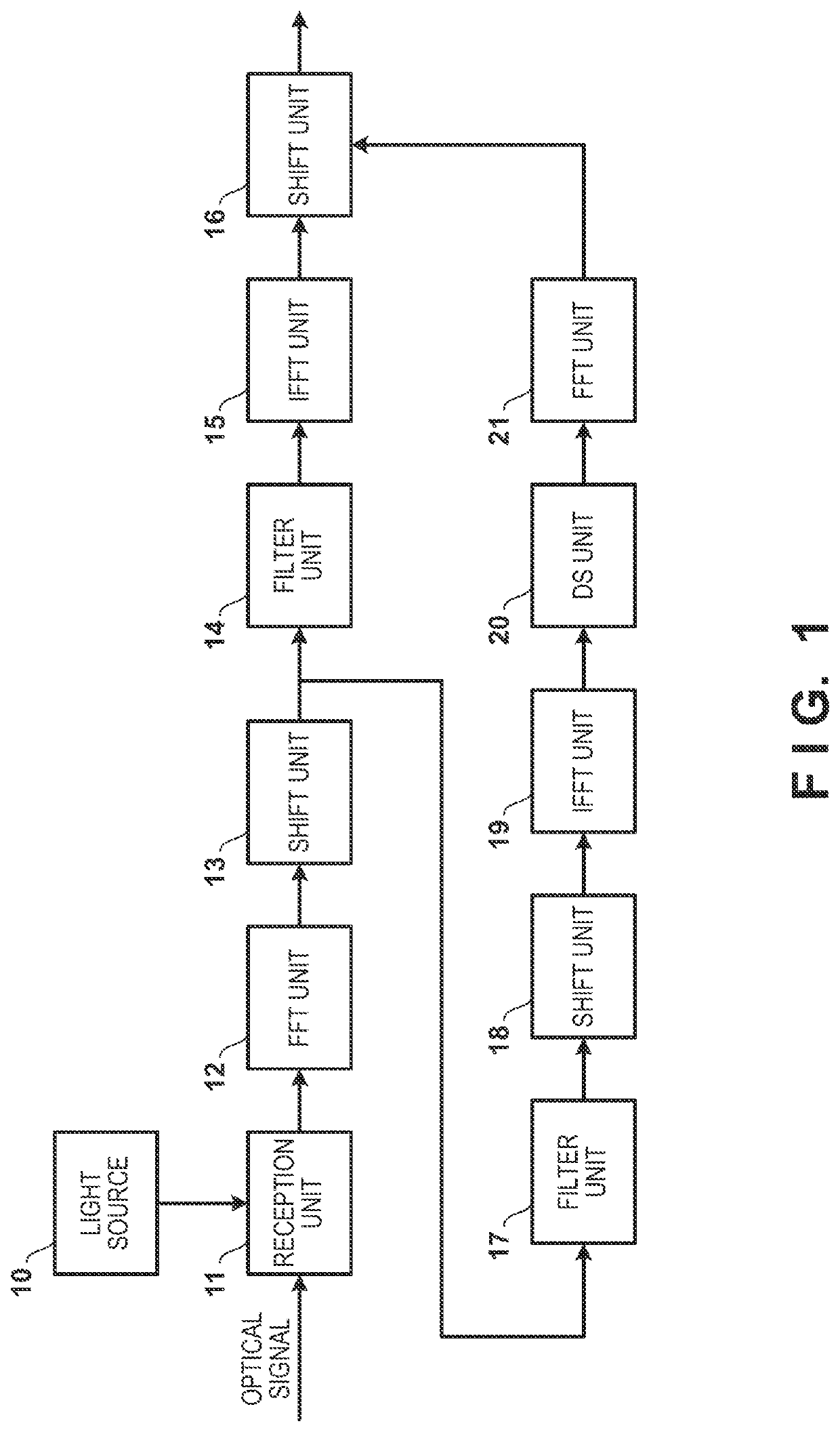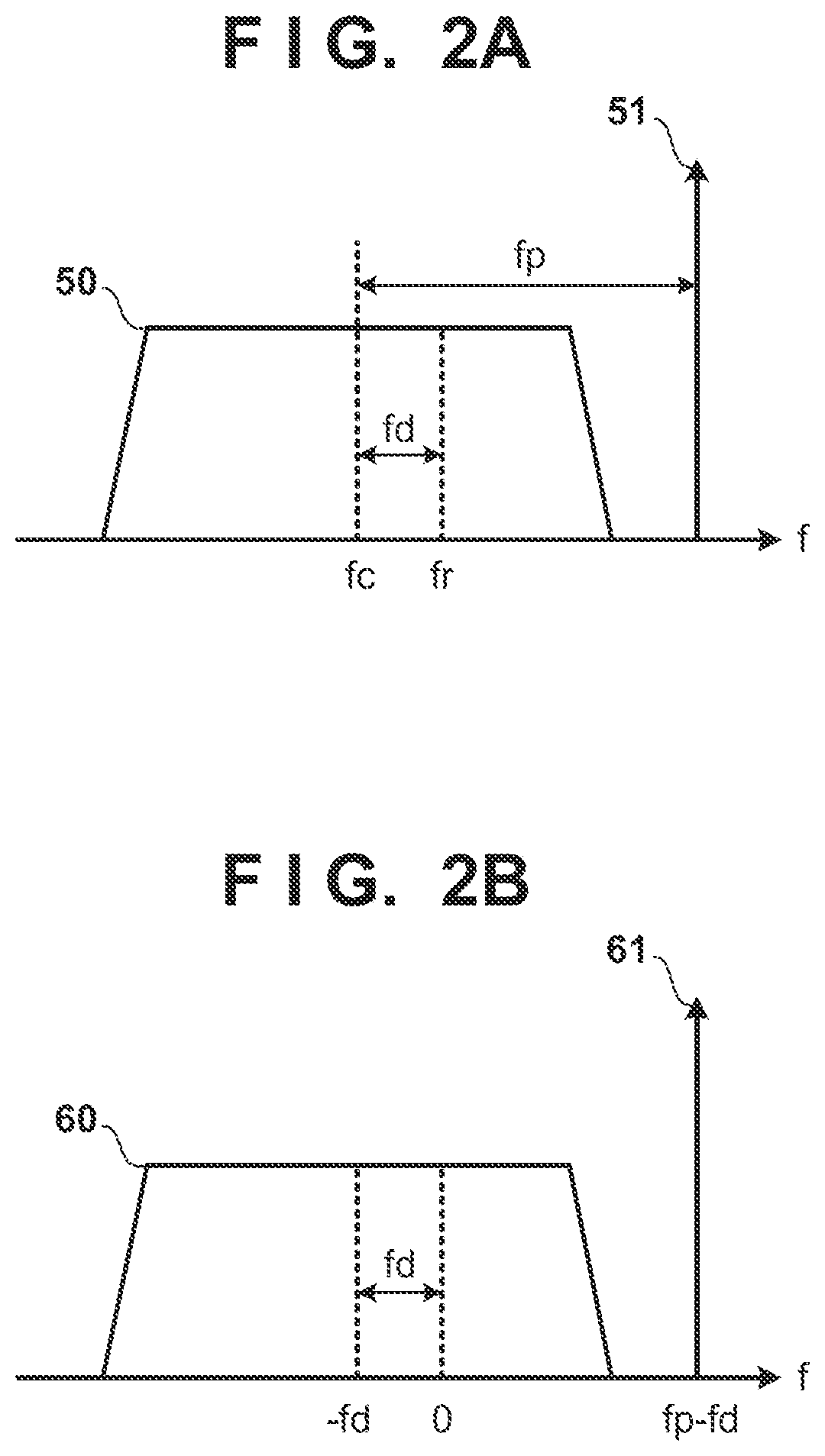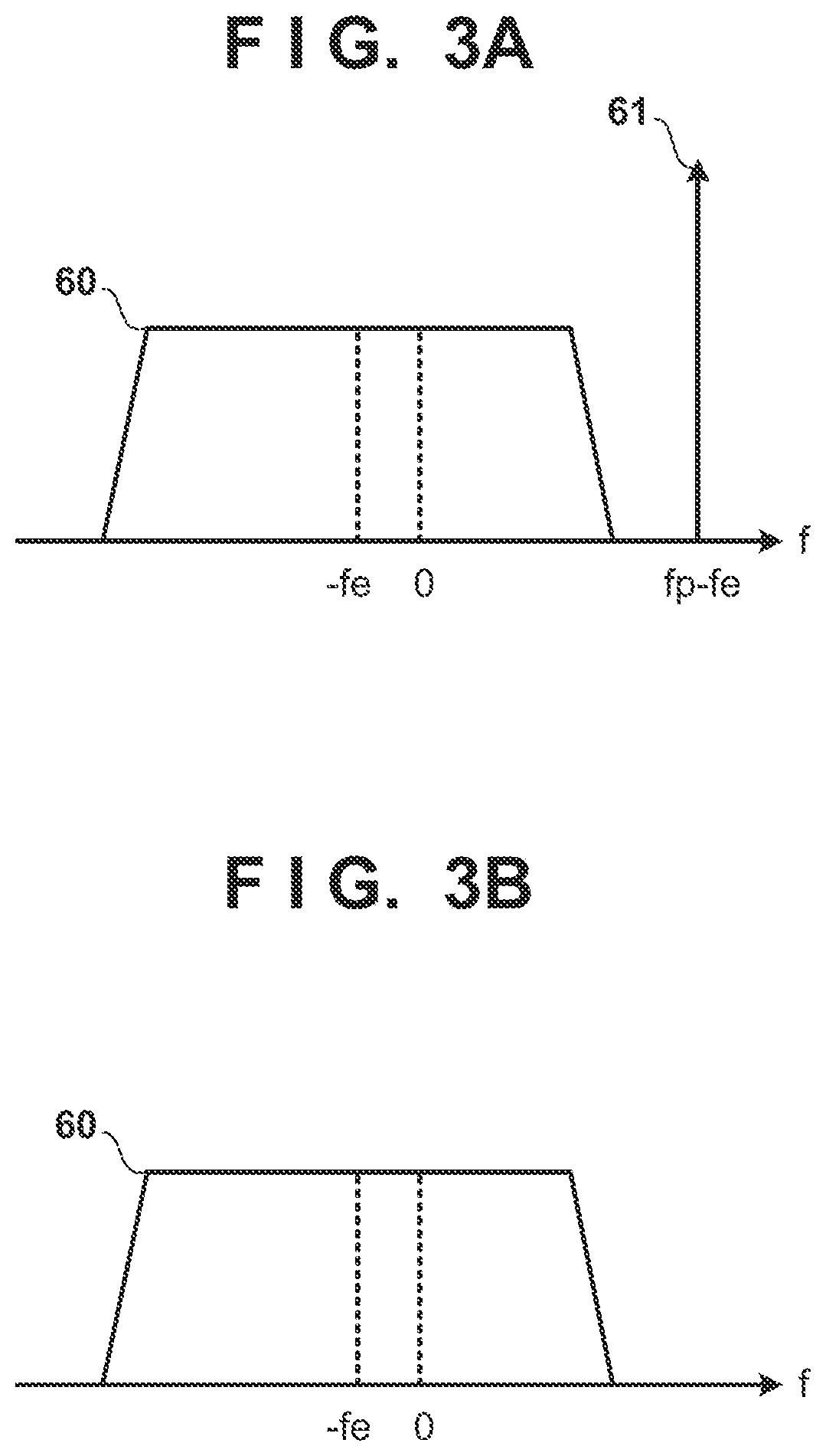Reception apparatus and non-transitory computer readable medium
- Summary
- Abstract
- Description
- Claims
- Application Information
AI Technical Summary
Benefits of technology
Problems solved by technology
Method used
Image
Examples
first embodiment
[0022]FIG. 1 is a block diagram of a reception apparatus according to the present embodiment. In the present embodiment, a transmission apparatus adds pilot light to modulated light carrying information, and transmits an optical signal including the modulated light and the pilot light. FIG. 2A illustrates the optical signal transmitted by the transmission apparatus and received by the reception apparatus. The optical signal includes modulated light 50 and pilot light 51. Note that a center frequency of the modulated light is assumed to be fc, and the frequency of the pilot light is assumed to be higher than fc by fp. Note also that as illustrated in FIG. 2A, although the frequency of the pilot light 51 is higher than that of the modulated light 50 in present embodiment, the configuration may be such that the frequency is lower.
[0023]A light source 10 of the reception apparatus generates local light and outputs the local light to a reception unit 11, and the reception unit 11 perform...
second embodiment
[0043]A second embodiment will be described, focusing on the differences from the first embodiment. FIG. 5 is a block diagram of a reception apparatus according to the present embodiment. Note that function blocks that are the same as those of the reception apparatus of the first embodiment illustrated in FIG. 1 are given the same reference signs, and will not be described.
[0044]In the first embodiment, after the frequency shift by the shift unit 18, the pilot signal 61 was converted back to a signal in the time domain by the IFFT unit 19, and downsampling was then performed by the DS unit 20. In the present embodiment, after the frequency shift by the shift unit 18, downsampling is performed in the frequency domain before converting the signal to the time domain. Accordingly, a DS unit 22 selects a predetermined number of consecutive frequency samples, including DC (frequency 0), from the frequency samples output by the shift unit 18. Note that the frequency samples selected by the...
PUM
 Login to View More
Login to View More Abstract
Description
Claims
Application Information
 Login to View More
Login to View More - R&D
- Intellectual Property
- Life Sciences
- Materials
- Tech Scout
- Unparalleled Data Quality
- Higher Quality Content
- 60% Fewer Hallucinations
Browse by: Latest US Patents, China's latest patents, Technical Efficacy Thesaurus, Application Domain, Technology Topic, Popular Technical Reports.
© 2025 PatSnap. All rights reserved.Legal|Privacy policy|Modern Slavery Act Transparency Statement|Sitemap|About US| Contact US: help@patsnap.com



